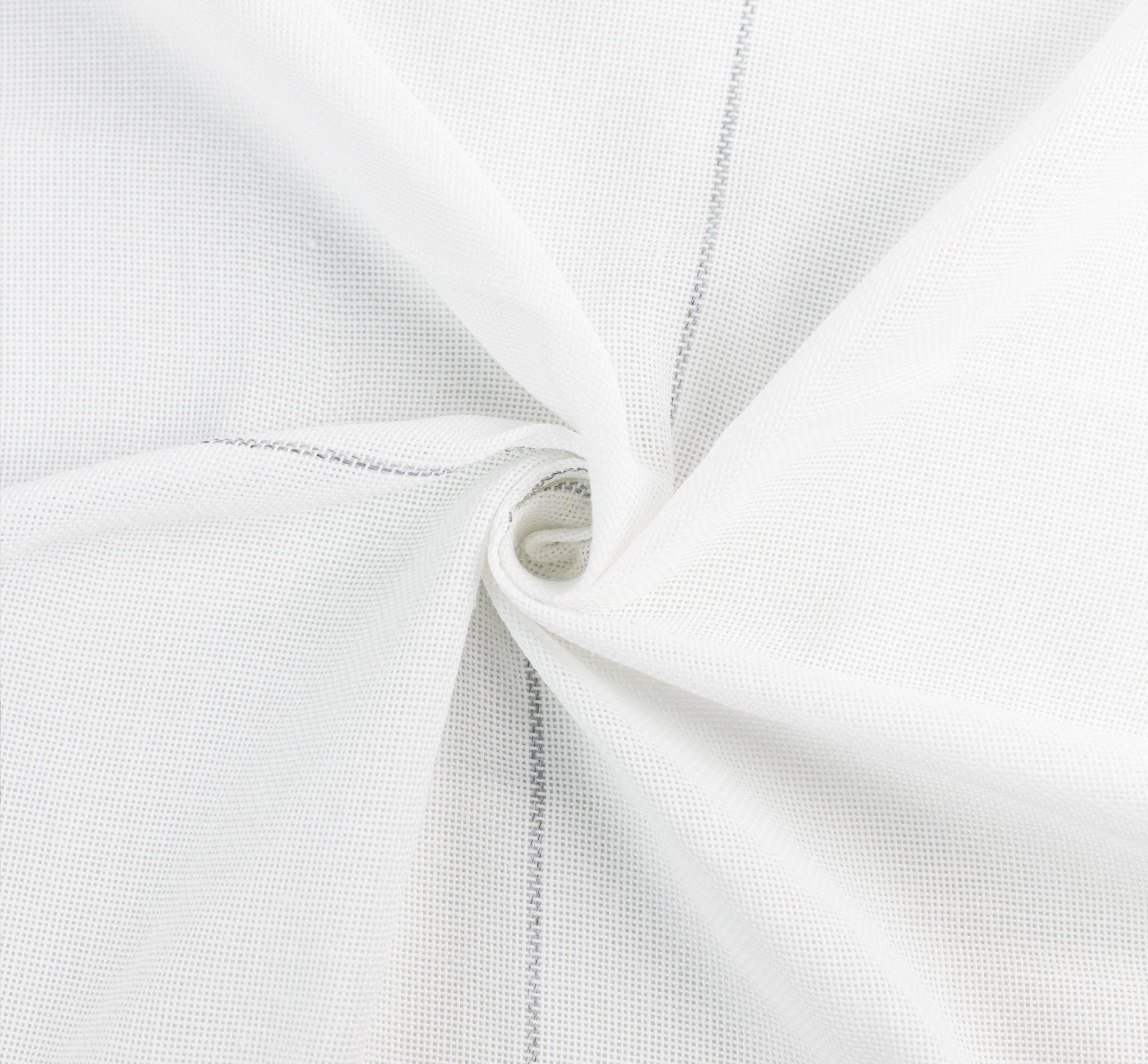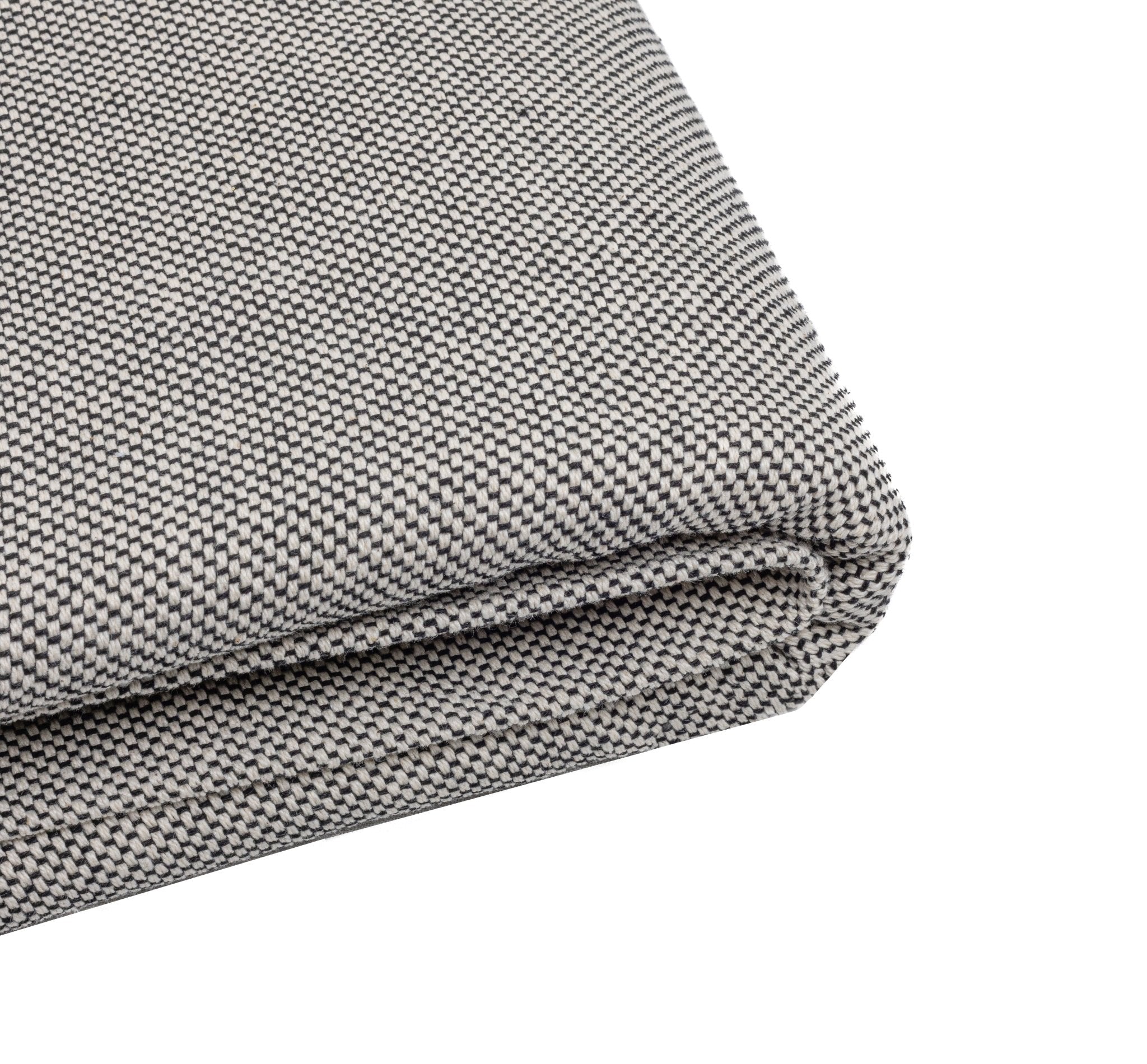Para tus proyectos de capitoné, ofrecemos diferentes tipos de tejidos de calidad profesional. Existen dos categorías principales de tejidos: tejidos primarios y tejidos secundarios con mechones. Complementarios, son imprescindibles para tus proyectos capitoné.
Los diferentes tipos de tela para tufting
El tufting es una técnica de mechones de hilo, en lana o acrílico , a través de una tela base estirada sobre un marco. Este tejido se denomina tejido primario para mechones, monje o monje. Para hacer mechones, lo más frecuente es que utilices una pistola para mechones . Por tanto, la importancia del tejido primario es considerable. Imposible crear sin él. La tela de mechones de primera calidad está disponible en colores blanco o gris y está hecha de poliéster. La tela blanca con líneas amarillas espaciadas cada 5 cm está hecha de una mezcla de algodón y poliéster. Flexibles y robustos, están pensados para soportar la presión de la pistola de mechones. Bien pensados, tienen un marcado que te sirve de referencia a la hora de crear patrones o diseños.
Los diferentes tipos de tejido de acabado.
Los tejidos de acabado son los llamados tejidos secundarios. Intervienen una vez finalizada tu creación y tienen una doble función. Por un lado mejoran la estética de tu proyecto, y por otro alargan su vida. Ya sea que estén hechas de una mezcla de algodón y poliéster, o 100 % algodón de primera calidad, las telas de acabado se colocan en la parte posterior de su trabajo y se utilizarán para:
- Oculta los hilos detrás de la tela base;
- Fortalece tu trabajo y por tanto alarga su vida útil;
- Proporciona un efecto antideslizante según el modelo seleccionado.
¡Ahora todo lo que tienes que hacer es elegir!
FAQ - Tufting Fabrics
-
- Yellow line fabric : Made of 70% polyester and 30% cotton, it is more flexible and has lines every 5 cm for easier cutting.
- Premium fabric : 100% polyester, stiffer and providing excellent support for professional projects.
-
No, burlap is too stiff and may tear under the pressure of the tufting gun. It is best to use a fabric specifically designed for tufting.
-
- Primary fabric : The main fabric stretched over a frame on which the tufting is carried out. It must be strong and well stretched.
- Secondary fabric : Secondary fabric that is placed on the back of the carpet to provide a professional finish and protect the carpet from wear and tear.
-
Secondary fabric is a fabric added to the back of a tufted carpet after the glue has been applied. It allows for:
• Protect the threads and glue to prevent them from becoming damaged over time.
• Give a clean and professional finish to the carpet.• Improve the strength and durability of the carpet. -
- Use grippers to ensure even tension.
- Pull each side of the fabric taut, from top to bottom and then from left to right.
- The fabric should be taut like a drum, tap the center to check if it bounces back.
-
No, stapling the fabric to the frame is not recommended, as this does not allow for tension adjustment while tufting. Grippers are a much more effective solution.
-
No, it is essential to use a fabric specifically designed for tufting. An unsuitable fabric may tear under the pressure of the needle and will not hold the threads properly, rendering your project unusable.
-
- Projection: project your design onto the canvas and trace it.
- Freehand drawing: If you are proficient in drawing, you can trace the design directly onto the canvas.












